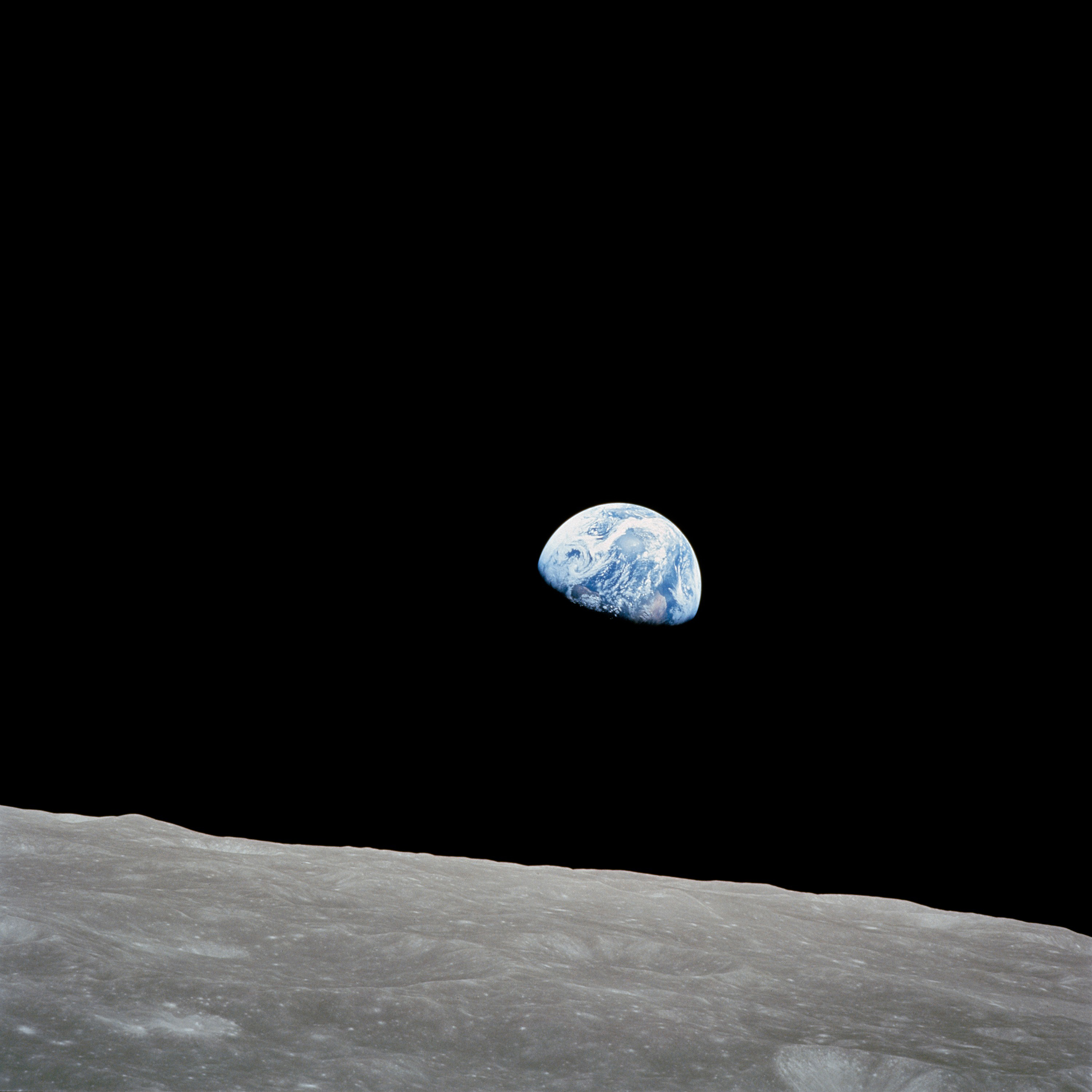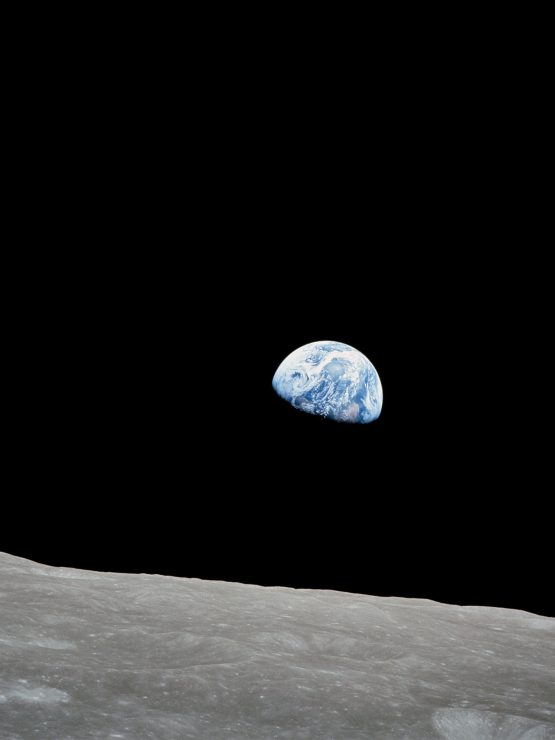
Fifty years ago, on December 24, 1968, three Apollo 8 astronauts peered through the small glass window of their command module hatch as they sped around the back side of the Moon. Below them was the cratered gray surface that no human had seen before.
As their capsule hurtled around the Moon like a slungshot, the Earth appeared in their window like a big blue marble rising above the bleak lunar landscape. As Frank Borman and Jim Lovell maneuvered their weightless bodies for a view, astronaut Bill Anders snapped a photograph destined to become one of the most famous and admired images in history. Known around the world as Earthrise, Ander’s photograph inspired awe and a sense of how vulnerable our little spaceship Earth really is.
The Apollo missions had been inspired by a bold proclamation delivered by John F. Kennedy, the youngest president in United States history, soon after taking office in 1961. The Cold War with the Soviet Union resulted in competition on all fronts, including space—the final frontier. Kennedy himself, felled by an assassin’s bullet, would never see Earthrise.
But the 400,000 American scientists, industrialists, astronauts, and workers across the country that he had mobilized continued the space race aimed at putting a man on the Moon and bringing him safely home again.
It was a monumental task that Americans accepted with a confident “Can Do!” spirit. Pittsburgh played a major role in the effort. In fact, no city contributed more to the success of NASA’s Moon mission.
North American Rockwell, headquartered here in Pittsburgh, built the command module that carried those Apollo 8 astronauts as they peered through the special heat resistant window made by PPG. The massive Saturn V rocket (almost as tall as the Cathedral of Learning) that propelled the astronauts to the Moon was made by contractors that included Alcoa, US Steel, American Bridge Co., Hillman Co., Westinghouse, Wabtec’s Union Switch and Signal, and many other Western Pennsylvania companies.
Just 65 years earlier, two Ohio bicycle shop owners, determined to prove that human beings could defy gravity, came to Pittsburgh to see if the recently incorporated Aluminum Company of America might be able to produce a lightweight engine block that would enable them to get their “flying machine” off the ground. Brothers Orville and Wilbur Wright had their prayers answered with Pittsburgh ingenuity. With its aluminum engine, the Wright Flyer took off at Kitty Hawk in 1903 and changed the world.
Yet while 1968 was the best of times, it was also the worst of times. The Cold War was far from over as Americans jockeyed with the Russians for power and dominance around the world. The superpowers signed a nuclear test ban treaty as people worried about a war that would lead to Mutually Assured Destruction (MAD) and the end of planet Earth. The nightly Vietnam body count seen by Americans on the evening news during the Tet Offensive shocked the nation. The war began to erode public confidence in our leaders and institutions. Cynicism, protest, and civil unrest began to replace the unity that had been the American ideal, if only imagined.
President Lyndon Johnson, his popularity plummeting as a result of the Vietnam War, announced that he would not seek re-election.
Weeks later, civil rights leader Martin Luther King Jr., a champion of peaceful change, was assassinated in Memphis. Many American cities, including Pittsburgh, burned in riots of indignation and rage. That summer, Bobby Kennedy was gunned down in Los Angeles during his own presidential bid.
As if all this was not bad enough, American environmentalists, inspired by Pittsburgh’s Rachel Carson, sounded the alarm that air pollution contaminating the thin veil of atmosphere clinging to our planet was slowly choking us to death. That year, emission controls were for the first time required on all automobiles in the U.S.
In 1968, it appeared that the America, indeed the world, was coming apart at the seams. And yet there was a ray of hope.
On Christmas Eve, the Apollo 8 crew of Anders, Lovell, and Borman recited the first 10 verses from the Bible’s Book of Genesis to the largest television audience in history.
Three days later on Dec. 27, the Apollo 8 crew returned safely home. They brought with them Earthrise. The image galvanized the people of the world at the close of a tumultuous year and presaged the Moon shot of July 1969 when Apollo 11 astronaut Neil Armstrong stepped off the lunar lander—”one small step for (a) man, one giant leap for mankind.”
Watch this video, a simulation created by NASA for the 45th anniversary of Earthrise. Using photo mosaics and elevation data from Lunar Reconnaissance Orbiter (LRO), this video commemorates the 45th anniversary of Apollo 8’s historic flight by recreating the moment when the crew first saw and photographed the Earth rising from behind the Moon. Narrator Andrew Chaikin, author of “A Man on the Moon,” sets the scene for a three-minute visualization of the view from both inside and outside the spacecraft accompanied by the onboard audio of the astronauts.
Andrew E. Masich, PhD, is the President and CEO of the Senator John Heinz History Center. The museum’s Destination Moon: The Apollo 11 Mission exhibition, developed by the Smithsonian’s National Air & Space Museum, is currently on display through Feb. 18, 2019.
